
With the the disastrous freezing temperatures in the South a few weeks ago I started to see some internet chatter about terracotta pots and candles as an emergency heat source. One social media post even went so far as to claim that you could heat your whole house with a few “tea” candles.
Further research proved that to be a wild exaggeration, but there was apparently some truth and science behind the general idea so I decided to try it out for myself.
The Research
The principle involves using stacked clay terracotta pots to produce a sort of heatsink and air circulation to hold onto the heat from a candle and radiate it out into the room. This could more reasonably be called a “warmer” rather than a “heater”, because you can bring the temperature up in a small confined space with it, but you are not going to make it tropically balmy nor are you going to be able to heat a whole house with a single unit.
I perused a bunch of blogs and web posts about this, picked a few to get ideas from (see links below) and decided to try one myself as a back-up to my back-up plan for emergencies. There were a wide variety of design ideas to choose from. Some designs used eyebolts and nuts to hold the pots together, some just used aluminum foil to cover the hole on the inner pot. Some used rocks or bricks to hold up the pots and some used oven safe loaf pans. I am not an engineer, so I picked and chose what might be do-able for me and went with that for an experiment.
The Build
With the idea that I wanted to go big or go home, I bought six inch and eight inch clay pots, since I was going to use chafing dish fuel rather than small candles. I also bought a terra cotta tray/drip plate to stage the whole thing in. I used two broken pieces of brick from my yard to hold up the pots because I thought they would be heat safe and they were free. I chose the canned chafing fuel over a candle because a single can of fuel can last for six hours, it would not require any wick trimming, and chafing dish fuel has a long safety record for indoor use.
**Disclaimer – Bear in mind I make no safety claims for anyone else. It worked for me and I didn’t burn the house down, but I also kept my kitchen fire extinguisher handy because even “I” wasn’t sure that it was totally safe. Additionally, although this fuel is rated safe for indoor use, you should have a carbon monoxide detector available and use it.**
On Sunday morning I “built” my contraption. I staged it on my kitchen island on top of a thick cutting board to help insulate the countertop from heat because I wasn’t sure how hot the bottom was going to get. In a “real” situation I imagine that I would set it up on the metal kitchen cart on wheels so that I could move it more to the center of the room and it would be up away from foot traffic.
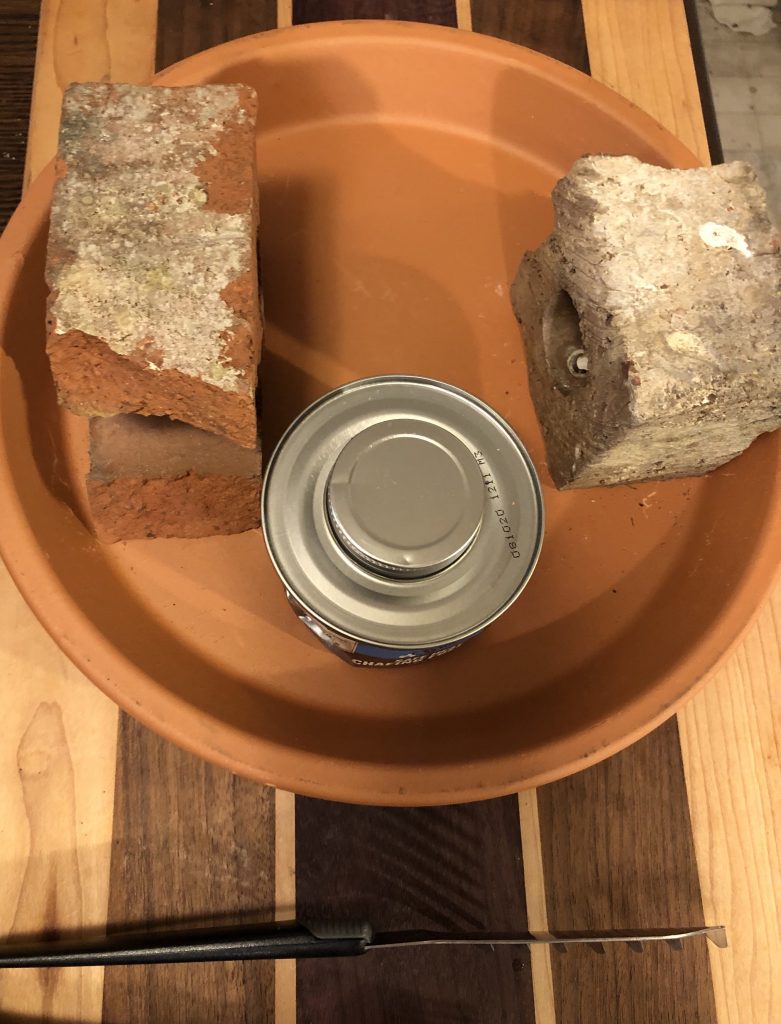
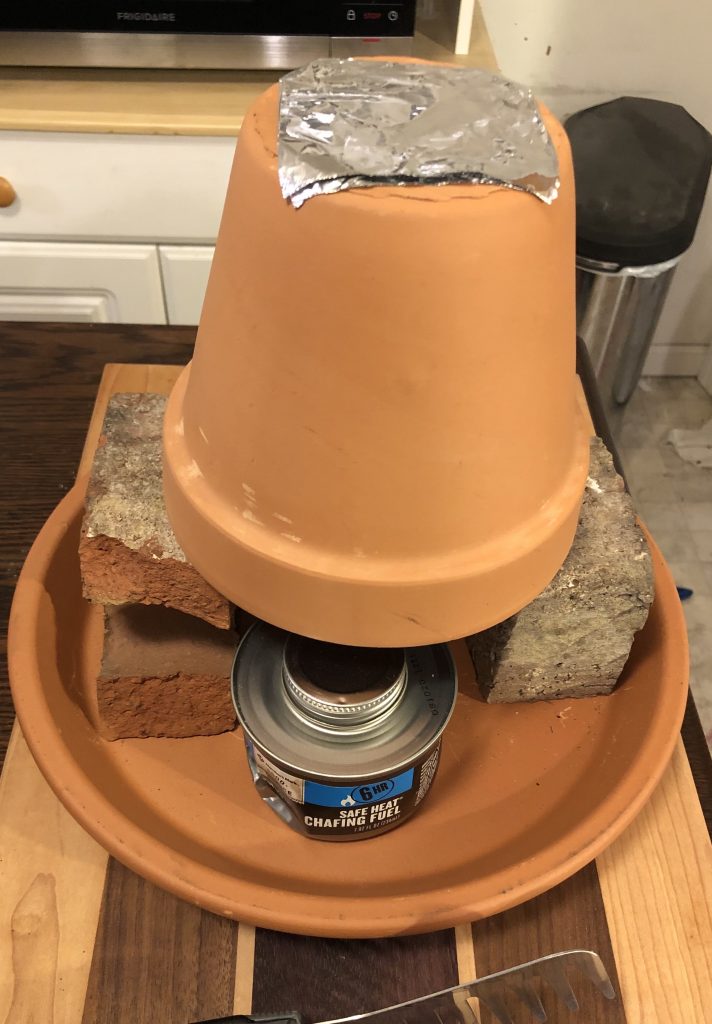
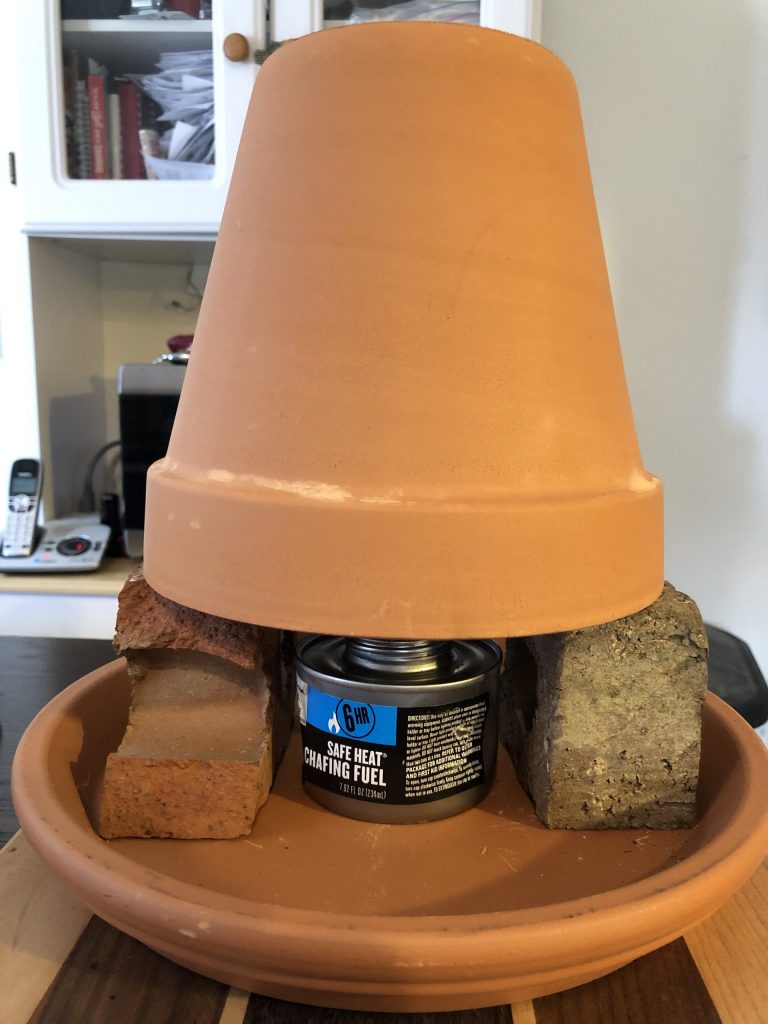
The Experiment
15 minutes after lighting the wick in the can of fuel, I measured the temperature at the top of the outside pot (but not at the hole) as 125F. That’s with my meat thermometer which is the only one I have. The outside pot was too hot to touch at that point and I could feel the temperature difference with my hand from about a foot away.

At the 30 minute mark the temperature at the top of the pot was 180F. By this point the bottom tray and bricks were warming but still safe to touch. I could feel the subtle but detectable air temperature change with my hand to about 2 feet out, and this was in my 72 degree house.
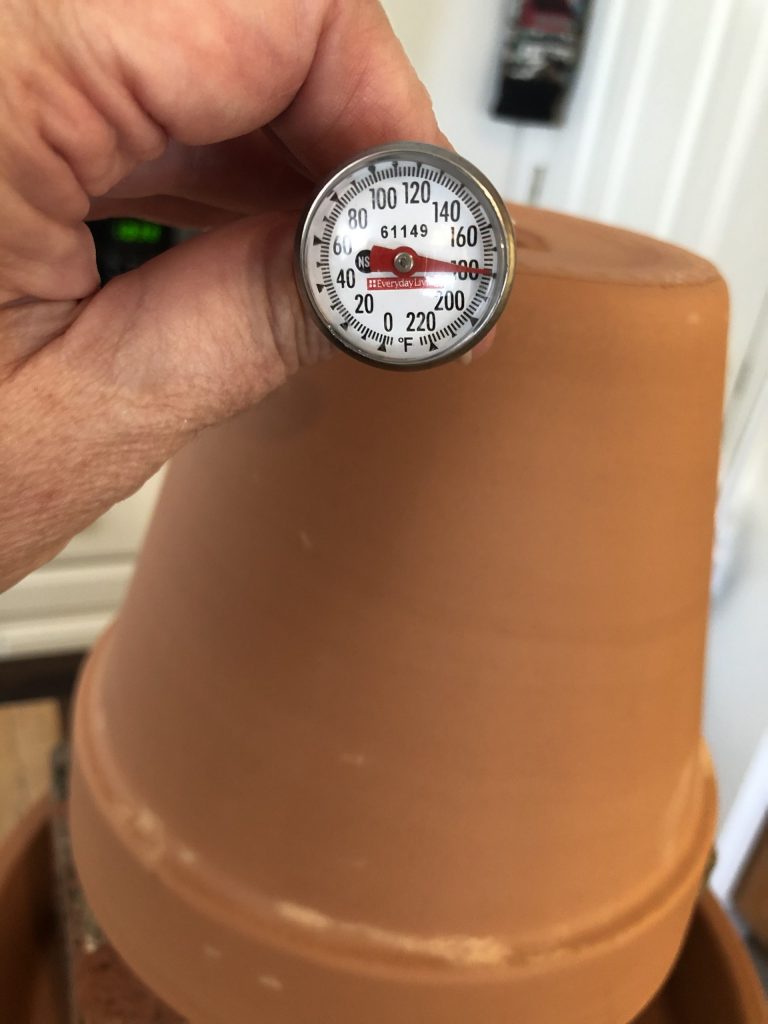
By the 60 minute mark the temperature on the top pot seemed to have maxed out at about 190F, and was the same at the 75 minute mark. Meanwhile the temp right next to the fuel remained at a seemingly safe 100F. One would assume that chafing dish fuel would have to maintain a reasonably safe temperature range in order to not set the wedding buffet table on fire, but I checked nonetheless. The base tray was also quite warm but safe to touch.
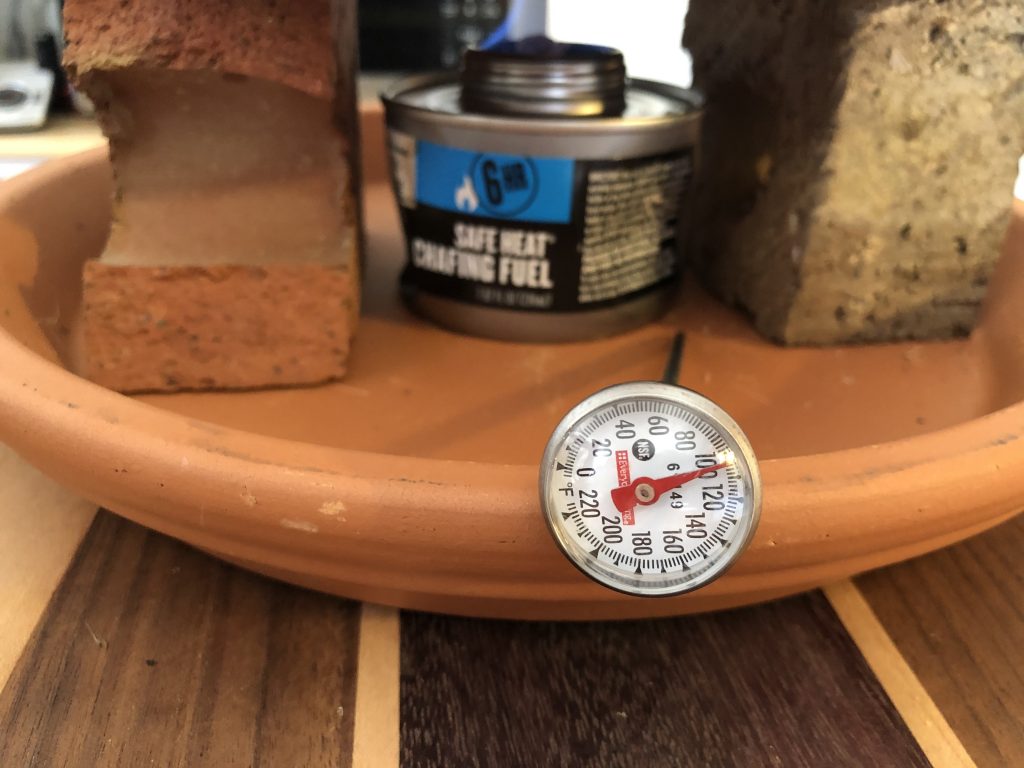
By 90 minutes I could definitely feel the difference when I left the room and came back in. Again, this was in my already 72 degree house. Now, it wasn’t like have a roaring fireplace – more like when you enter a room that has bright windows – the radiant heat from the sun having warmed things up a few degrees. At the two hour mark, satisfied that it seemed to work, I turned the contraption “off” by using kitchen tongs to put the lid back on the fuel can.
Conclusions
Without any heat at all in the house, I think this would make a difference in a confined space. Remember that this is a “big” unit, so YMMV depending on what fuel you use, the size of your pots and the design of your unit. It’s not central heating but it may make your ordeal a little more comfortable and keep you from freezing to death – if you use your head.
I think a smaller 3-4-inch pot with a tea candle might still make a difference in an area where a few degrees matter – like in a small bathroom with the sink doors open to help keep the pipes from freezing.
Once it cools back down, this warming rig is definitely going in a storage tub in my basement for emergency use. I think I’ll include a few cans of fuel, a sheet of foil, a set of tongs and a barbecue lighter in the tub as well so that everything is there in one place if/when I need it. Hopefully I never do.
Some Links:



